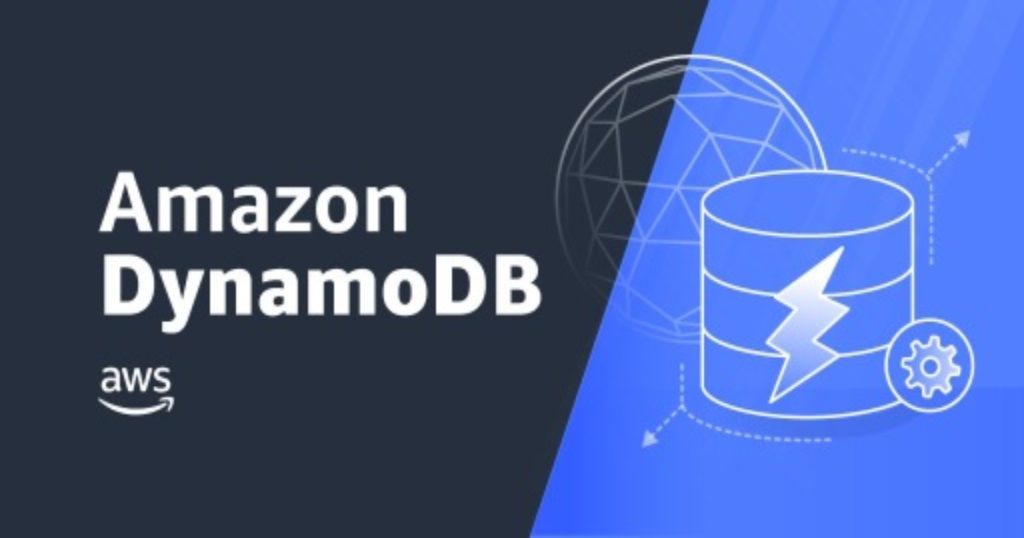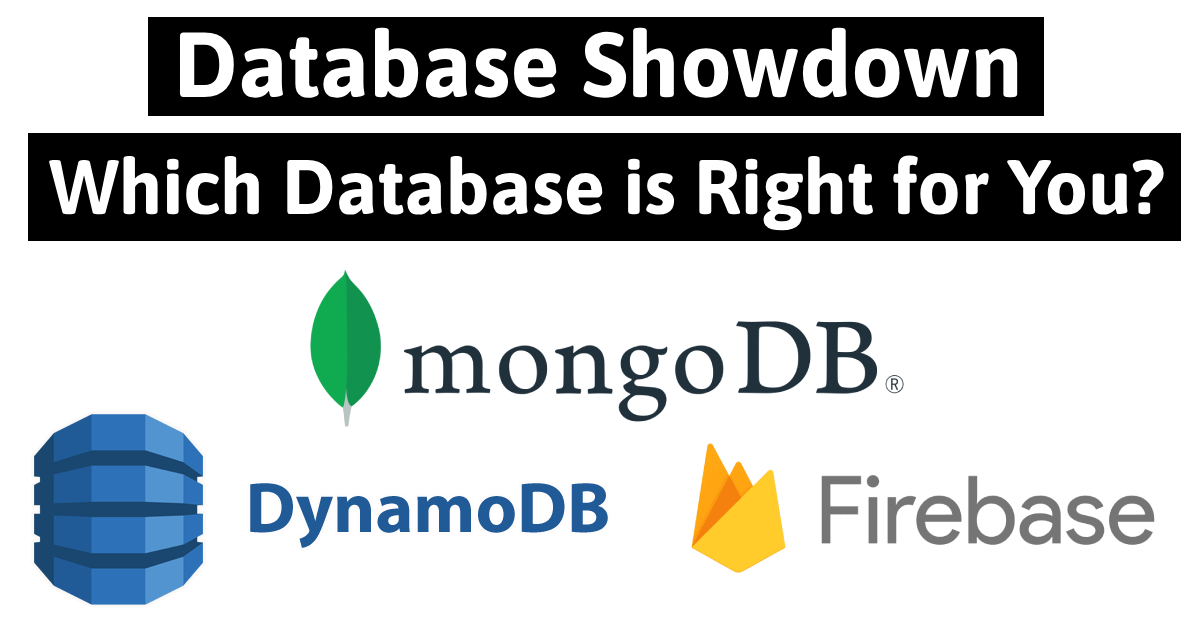Selecting the right database is a critical decision for any software development project. With numerous options available, developers often find themselves comparing different databases to determine the most suitable one for their specific requirements. Three popular choices for modern applications are MongoDB, DynamoDB, and Firebase.
In this article, we will delve into the features, strengths, and use cases of each database, aiding you in making an informed decision for your development needs.
The History of MongoDB

MongoDB, a prominent NoSQL database, was developed by Dwight Merriman and Eliot Horowitz in 2007. The project originally aimed to create a cloud-based platform named 10gen, but the founders encountered limitations with existing databases. Thus, they set out to build a new database that could handle vast amounts of data and support real-time applications effectively. In 2009, MongoDB 1.0 was officially released, gaining traction for its flexibility, scalability, and ease of use. As adoption grew, MongoDB Inc. was founded in 2010 to provide support and commercial services for users.
Over the years, MongoDB has seen continuous development and feature enhancements, leading to its widespread adoption across various industries and use cases. Today, MongoDB remains a popular choice for modern applications, offering seamless integration with programming languages and robust cloud-based solutions like MongoDB Atlas.
Advantages of MongoDB
- Flexible Data Model: MongoDB’s schema-less design allows developers to store and handle data with varying structures and types, providing greater flexibility as application requirements evolve.
- Scalability: MongoDB supports horizontal scaling through sharding, enabling applications to handle large datasets and high traffic loads efficiently.
- Performance: With its ability to store data in BSON format and index fields, MongoDB offers high read and write performance for many use cases.
- Rich Query Language: MongoDB provides a powerful query language with support for complex queries, aggregation, geospatial queries, and more, making it versatile for data retrieval and analysis.
- Document-Oriented: The document-based data model aligns well with object-oriented programming paradigms, simplifying data manipulation and mapping.
- Community and Ecosystem: MongoDB boasts an active community and a thriving ecosystem of tools, drivers, and libraries, making it easier for developers to integrate MongoDB into their applications.
Disadvantages of MongoDB
- No ACID Transactions: MongoDB does not offer ACID (Atomicity, Consistency, Isolation, Durability) transactions across multiple documents, which can be a concern for applications requiring strict transactional integrity.
- Memory Consumption: MongoDB’s in-memory consumption can be high, especially when dealing with large datasets, which might lead to increased hardware requirements.
- Complex Indexing: Managing indexes in MongoDB can be challenging, and improper indexing may negatively impact query performance.
- Data Integrity Challenges: As MongoDB lacks predefined schemas, data integrity enforcement relies on application-level logic, which can be more error-prone and require careful implementation.
- Single Master Replication: In MongoDB’s default configuration, only one node can accept writes, which can become a bottleneck for write-heavy workloads.
- Learning Curve: MongoDB’s unique data model and query language might require a learning curve for developers transitioning from traditional relational databases.
Companies that Use MongoDB
- Adobe
- eBay
- Bosch
- Citrix
- Cisco
- Forbes
- The New York Times
- Uber
The History DynamoDB

Amazon DynamoDB, a fully managed NoSQL database service, was introduced by Amazon Web Services (AWS) in January 2012. The origins of DynamoDB can be traced back to Amazon’s internal database system, which shared the same name. The original DynamoDB, developed by Amazon engineers in 2004, served as a distributed key-value store for handling the company’s growing data needs. In 2007, Amazon published a research paper detailing the design principles of Dynamo, inspiring the creation of various distributed database systems. Leveraging the learnings from Dynamo, AWS introduced DynamoDB as a fully managed service, providing customers with seamless scalability, high availability, and low-latency performance.
Since its launch, DynamoDB has grown in popularity, serving as a reliable and efficient database solution for a wide range of applications, from web and mobile apps to IoT and gaming platforms. Its serverless architecture and ability to handle massive workloads have made it a preferred choice for developers seeking a scalable and performant NoSQL database.
Advantages of DynamoDB
- Scalability: DynamoDB is designed for seamless horizontal scaling, automatically handling high read and write throughput, making it suitable for applications with rapidly changing workloads.
- Serverless Architecture: DynamoDB provides a fully managed service, allowing developers to focus on their application logic without worrying about database administration tasks.
- Low Latency: DynamoDB offers single-digit millisecond latency for both read and write operations, ensuring fast and responsive application performance.
- Predictable Performance: With its provisioned throughput model, DynamoDB allows developers to specify the desired read and write capacity, providing predictable performance even during peak times.
- Strong Consistency: DynamoDB supports strong consistency for read and write operations, ensuring data accuracy and integrity.
- Global Tables: DynamoDB Global Tables enable automatic multi-region replication, providing low-latency access to data from any geographic location.
Disadvantages of DynamoDB
- Cost: DynamoDB’s pricing model can be complex and might be more expensive compared to some other database options, especially for applications with unpredictable workloads.
- Limited Secondary Indexes: DynamoDB has limitations on the number and types of secondary indexes that can be created, which can affect query flexibility.
- No ACID Transactions: DynamoDB does not support full ACID (Atomicity, Consistency, Isolation, Durability) transactions, which can be a concern for applications requiring strict transactional integrity.
- No JOIN Operations: DynamoDB does not support JOIN operations like traditional relational databases, which may require denormalizing data and managing relationships manually.
- Query Complexity: Complex queries in DynamoDB often require scanning large data sets, which can result in higher costs and increased read capacity.
- Data Model Constraints: DynamoDB’s key-value data model might not be the best fit for applications with complex relationships and nested data structures.
Companies that Use DynamoDB
- Netflix
- Airbnb
- Samsung
- Lyft
- Slack
- Zynga
- NASA
- Capital One
- The Washington Post
The History of Firebase

Firebase Realtime Database, commonly referred to as FirebaseDB, is a cloud-hosted NoSQL database introduced by Firebase Inc. in 2011. Firebase was initially founded as a mobile and web application development platform, but it expanded its offerings to include a real-time database service to address developers’ need for seamless data synchronization in real-time across multiple devices. The Realtime Database was built on top of Google’s cloud infrastructure, enabling developers to create responsive and collaborative applications with synchronized data updates. The database’s ability to instantly propagate changes to connected clients without the need for manual refreshes made it well-suited for real-time chat apps, collaborative tools, and other applications requiring instant data synchronization. In 2014, Firebase was acquired by Google, further enhancing the platform’s capabilities and integrations with other Google services.
Over the years, FirebaseDB has evolved, incorporating additional features such as authentication, analytics, cloud messaging, and hosting, becoming a comprehensive development platform for building modern applications with real-time capabilities and seamless data management.
Advantages of Firebase
- Real-time Database: Firebase offers a real-time NoSQL database that synchronizes data across all connected clients in real-time, making it ideal for building collaborative and responsive applications.
- Serverless Architecture: Firebase provides a fully managed serverless platform, allowing developers to focus on their application logic without worrying about server setup and maintenance.
- Authentication and User Management: Firebase offers built-in authentication services, supporting various authentication providers, which simplifies user management and access control.
- Cloud Functions: Firebase Cloud Functions enable developers to run server-side logic in response to events, making it easier to integrate with other services and extend application functionality.
- Hosting and CDN: Firebase provides fast and secure web hosting, along with a content delivery network (CDN), ensuring optimal performance for web applications.
- Analytics and Performance Monitoring: Firebase includes robust analytics and performance monitoring tools, providing valuable insights into user behavior and application performance.
- Easy Integration: Firebase offers SDKs and libraries for various platforms, making it simple to integrate with popular development frameworks and programming languages.
Disadvantages of Firebase
- Vendor Lock-in: Using Firebase ties the application to Google’s infrastructure, which can be a concern for some developers who prefer vendor-agnostic solutions.
- Limited Query Capabilities: Firebase’s query capabilities are not as advanced as some other databases, which might be a limitation for applications with complex querying needs.
- Data Export: Exporting data from Firebase can be more challenging compared to traditional databases, and it may require additional work for seamless data migration.
- Pricing Complexity: Firebase’s pricing model can be complex, and the costs can escalate as the application scales, requiring careful monitoring and optimization.
- No ACID Transactions: Firebase Realtime Database does not support ACID (Atomicity, Consistency, Isolation, Durability) transactions, which can be a limitation for applications requiring strict transactional integrity.
- Limited Offline Capabilities: While Firebase offers offline support, it might not be as robust as some other databases, potentially affecting applications that require extensive offline functionality.
Companies that Use Firebase
- The New York Times
- Shazam
- Alibaba
- Hopper
- Duolingo
- Instacart
- Robinhood
- PicsArt
- Postmates
- Delivery Hero
Final Thoughts
Choosing the right database is a vital step in the development process, as it directly impacts the performance and scalability of your application. MongoDB, DynamoDB, and Firebase each have distinct strengths and use cases, catering to a wide range of application requirements. While we favor Firebase as our database of choice, it’s worth noting that any other database can perform equally well.
Consider factors such as data structure, scalability needs, and real-time capabilities when making your decision. By assessing your project’s specific needs against the strengths of these databases, you can confidently choose the most suitable option for your application, setting the foundation for a successful and efficient development journey.
If you are ready and interested in developing a mobile app, you can always contact us to help you build it.






